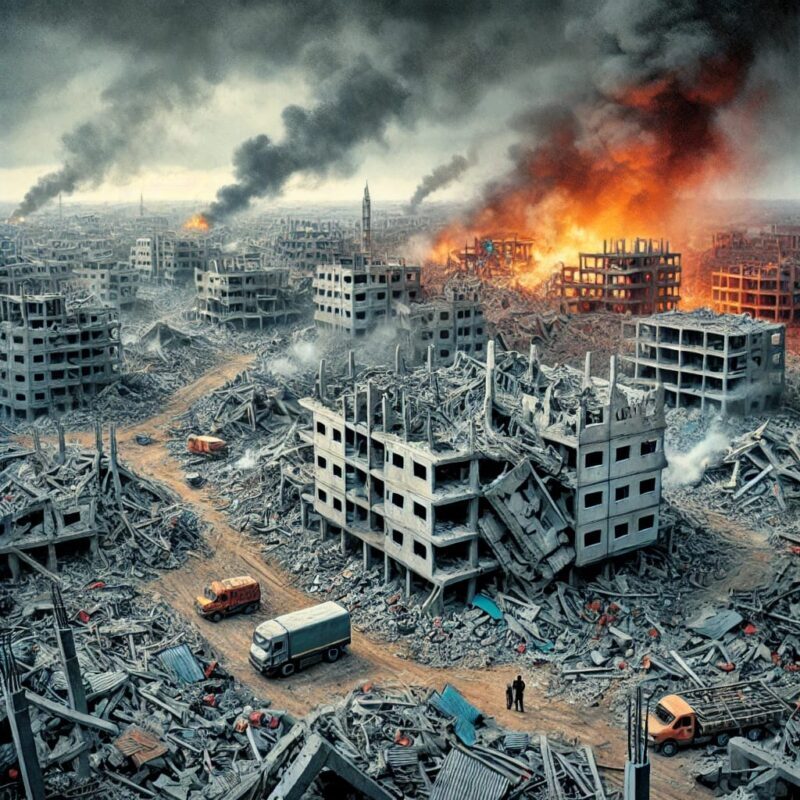Gaza: As Gaza marks one year since the onset of a devastating war triggered by Hamas’s October 7, 2023 attack on Israel, the humanitarian crisis has escalated to catastrophic proportions.
According to Palestinian health officials, nearly 42,000 Palestinians have been killed in the conflict, with over half of the fatalities comprising women and children.
Additionally, more than 96,000 individuals have sustained injuries, although the actual death toll is likely higher, as many victims remain buried under rubble or in areas inaccessible to medical teams.
Numerous governments and human rights organizations have condemned the military operations, labeling them as genocidal acts against the Palestinian people.
The conflict erupted following Hamas’s assault, which resulted in the deaths of 1,139 people in Israel and the captivity of approximately 250 individuals.
In response, Israel launched a relentless military offensive on Gaza, inflicting widespread destruction on the enclave. This military campaign has led to the displacement of about 90% of Gaza’s 2.3 million residents, most of whom have been forced to leave their homes multiple times.
Hundreds of thousands of Palestinian families now crowd into sprawling tent camps along the Mediterranean coast, facing severe shortages of electricity, running water, and sanitation facilities.
The Shelter Cluster, an international coalition of aid providers, has reported struggles in delivering basic supplies due to Israeli restrictions, ongoing fighting, and the breakdown of law and order in Gaza.
Data from satellite analysis reveals that nearly 60% of buildings in Gaza have been damaged or destroyed over the past year.
As of September 25, 2024, an estimated 227,591 housing units were affected, along with the destruction of over 92% of the enclave’s main roads and more than 84% of its health facilities.
Alarmingly, the UN has indicated that nearly 70% of Gaza’s water and sanitation plants have suffered damage or destruction, including all five wastewater treatment facilities and essential desalination plants, sewage pumping stations, wells, and reservoirs.
The United Nations also estimates that the war has generated approximately 40 million tonnes of debris and rubble, enough to fill New York’s Central Park to a depth of about 25 feet. Clearing this debris could take up to 15 years and require nearly $650 million.
The World Bank reported that damage costs in Gaza amounted to approximately $18.5 billion in the first three months of the conflict, a figure nearly equivalent to the combined economic output of the West Bank and Gaza in 2022.
Under existing Israeli restrictions, it is estimated that it would take 40 years to rebuild all of Gaza’s destroyed homes.
With the current military offensive in Gaza continuing to intensify, hunger and disease are rampant among the displaced population. As of recent reports, only 17 out of 36 hospitals remain partially operational, with all suffering from critical shortages of fuel, medical supplies, and clean water.
Food insecurity is expected to worsen further due to new customs regulations imposed on humanitarian aid.
The situation remains dire for the Palestinian population, as they continue to endure the catastrophic impacts of ongoing military actions. Independent investigations into Israel’s claims regarding Hamas’s operational bases in civilian infrastructure have often found insufficient evidence, raising concerns over the justifications for such extensive military action.
As the humanitarian crisis deepens, calls for immediate international intervention and support grow louder, highlighting the urgent need for a resolution to the conflict and a return to stability in the region.











